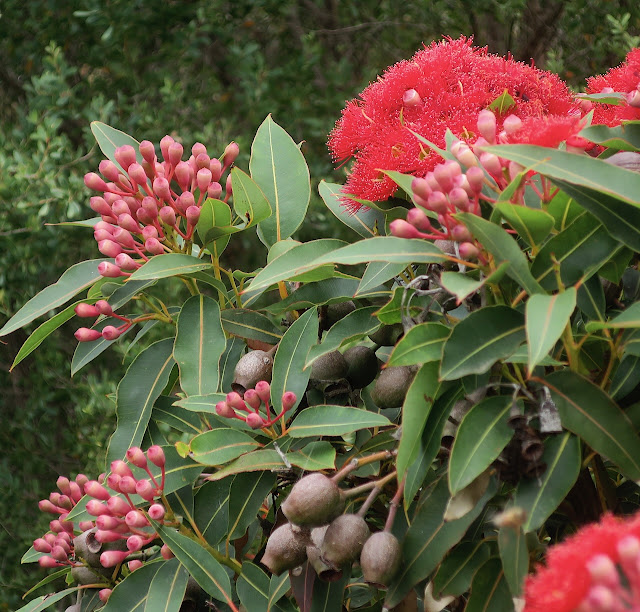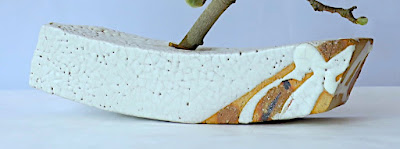Last week I noticed that a number of stems of the umbrella grass Cyperus alternifolius in the conservatory were yellowing. I think from insufficient water. I have them growing in a small plastic pond which is filled with potting mix. In the recent warm days more evaporation had occurred than I had realised. I remedied the situation, adding extra water, and removed the dying stems.
This resulted in a fair number of stems that I could not allow to go into the compost without first serving sometime as an ikebana subject. I went to the vase shelves and realised that a pair of recently acquired tall narrow resin vases would provide a sufficient height. Being a pair meant that I could set them apart and use the space between the vases.
I secured a number of stems to a vertical fixture, then bent them to create narrow scalene triangular forms. These have been bunched together so that the long tapering points are directed toward the other vase. Four bright red geranium flower heads provide focal points in each vase.
Greetings from Christopher
26th January 2025















